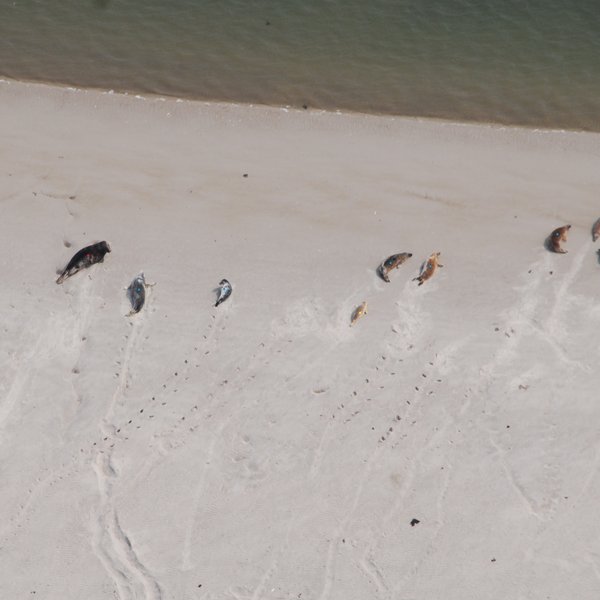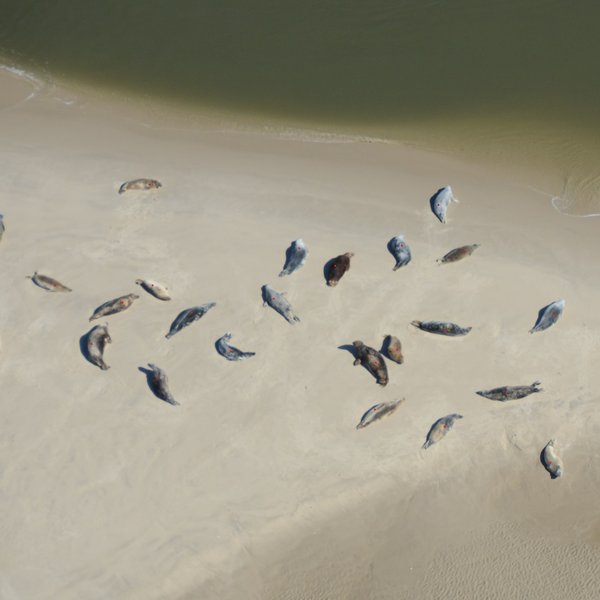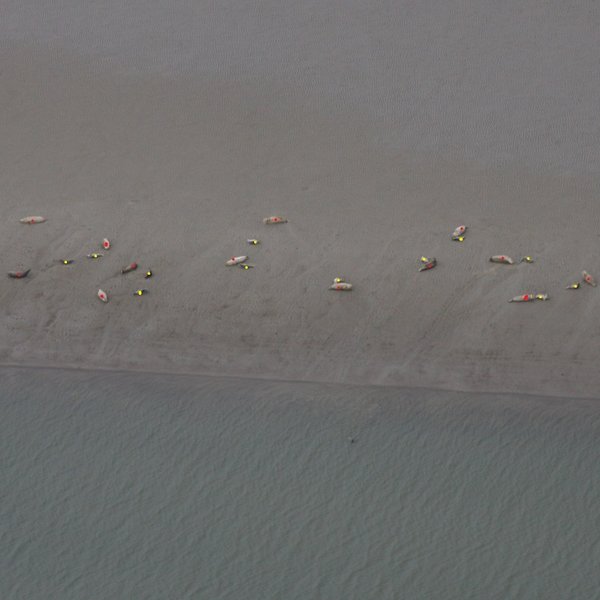Seal monitoring
The two seal species – harbour seal and grey seal – are flagship species in the Wadden Sea National Park. Since the establishment of the National Park, the seal population in the Wadden Sea has been regularly monitored from the air.
How many seals live in the Wadden Sea?
Harbour seals give birth to their pups in early summer at their haul-out sands in the inner Wadden Sea and moult. In the winter months, they are more likely to be found on the edge of the Wadden Sea and rather hunt in the open North Sea. For the grey seal population, which has been growing for years, the breeding season is in winter and moulting takes place in spring.
Methods
Since 1994, the seal population has been monitored in close coordination with the neighbouring Wadden Sea National Parks and the states bordering the Wadden Sea, the Netherlands and Denmark, within the framework of the Trilateral Monitoring and Assessment Programme (TMAP). The three states have protected seals in a joint agreement on the conservation of seals in the Wadden Sea that is binding under international law. In addition, this monitoring serves to fulfil the obligations arising from the EU Habitats Directive.
BioConsult SH carries out the aerial surveys in the Schleswig-Holstein Wadden Sea on behalf of the State Agency for Coastal Protection, National Parks and Ocean Protection (Landesbetrieb für Küstenschutz, Nationalpark und Meeresschutz – LKN Tönning). After the first approval period from 2016 to 2020, further flights have currently been commissioned until April 2024. Both seal species have to be counted in five surveys each per year. The grey seal survey flights take place in December (pupping season) and April (moult), while the harbour seal survey flights take place in June (pupping season) and August (moult). All surveys in all Wadden Sea areas are to take place as synchronously as possible and are therefore coordinated trilaterally. Both the size of the population and the proportion of pups of a year are determined in the flights.
Data analysis – How do you actually count seals from the air?
During aerial surveys, all seal haul-out sites in the Schleswig-Holstein Wadden Sea are covered at low tide capturing digital photographs. The exact number of seals in these photographs is determined subsequently. In order to get a comprehensive picture of the seal population, several flights are carried out both during the harbour seal pupping season in June as well as during the annual moult in August.
The following images provide an insight into the evaluation method.
Further information
Further information about the seal monitoring and the annual results of the surveys can be found on the website of the Common Wadden Sea Secretariat.





